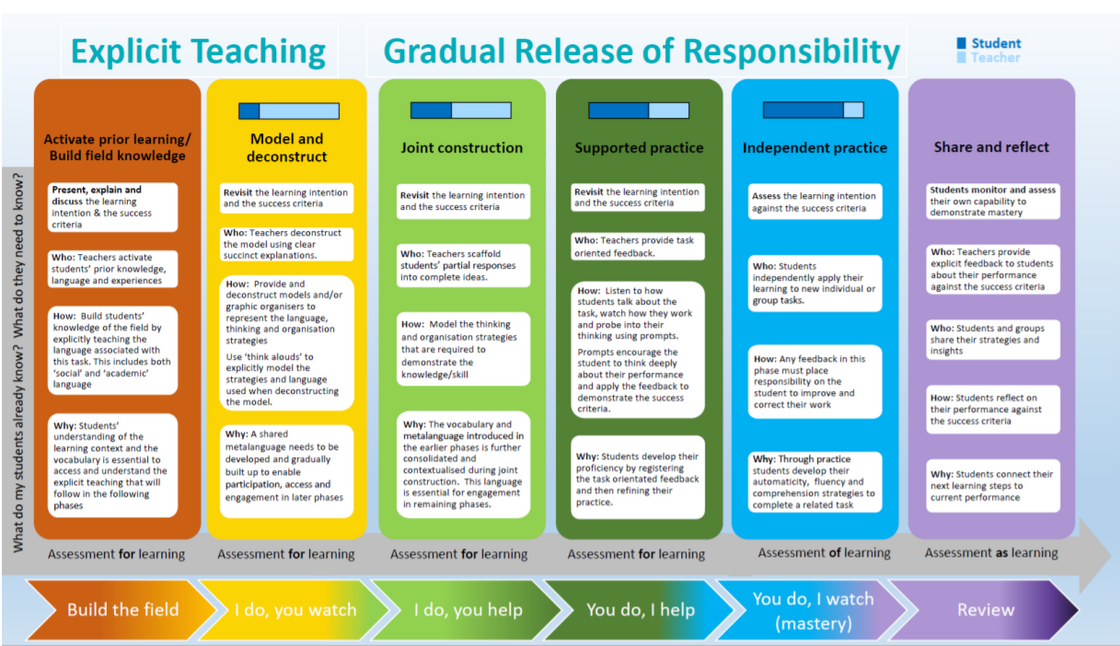Start Strong, Stay Strong

This week I had the great pleasure of presenting for Think Forward Educators. This excellent organisation is committed to bringing quality, accessible information to us teachers about the science of learning and the science of reading. It’s completely free to join. Members enjoy access to all previous webinars and presentations as well as a terrific array of resources and guides. You can find Think Forward Educators (and access the recording of my presentation from this week) here.
Before the presentation, participants were invited to submit questions. And submit them they did! The questions were thoughtful and showed the full range of contexts and stages of the learning journey that teachers are currently operating in. I was sorry to not be able to answer all of the questions, but there are follow up measures in place. Sit tight!
One of the most common themes of the questions was about where a school or individual teacher should start when they are looking to shift practice to structured literacy. The answer to this question is not a one size fits all, but I’ll have a go at sharing some of my thoughts and some considerations for schools wanting to start their change journey strong.
- Know that you aren’t going to do all of the things at once.
As a general rule, seek to change only 10-15% of what you are doing at any given time. This then needs time to be embedded before tackling the next thing. While you don’t have to do all the things at once, you do need a plan. Outline a timeline for change, identifying when knowledge will be built, when skill will be developed and when all of this will be reviewed by the team. It might take you two years to shift practice completely, but having a plan will really help! Reflect on the explicit teaching model for yourself and your colleagues in the same way you would for your students.

- Identify the declarative knowledge (stuff you need to know), the procedural knowledge (the stuff you need to know how to do) and the conditional knowledge (knowing when to do things and how to respond to various situations or contexts) for each practice you want to change. Aim to build both declarative and procedural knowledge together by sharing easy to access information and providing simple routines and resources. Then, when teachers feel that they are developing fluency in the area in question, work together to problem solve the solutions to the ‘when and how do we adjust to meet student need’. This last part is the ‘inquiry’ aspect of building teacher practice. Identify the ‘invisible bridge’ your staff need to cross. What is the knowledge that they MUST have in order to move forward?

- Identify the ‘low hanging fruit’ in your school and start there. You might have a big, long list of things you want to try out, but don’t start with the hardest thing first. If teachers have been dabbling in teaching irregular high frequency words to match the decodable texts students are reading and are coming to understanding the ‘regularities and irregularities’ in words, start there. Work with the team to decide on the effective, core elements of practice you want to see. From there, decide on common language and processes you will all agree to use.

- Have an open conversation about how you are going to measure progress and what success will look like. Data collection and measurable outcomes are important when you are heading into unchartered waters in your school. Get consensus on ‘what questions are we trying to answer with our assessment?’ From there, the selection of the tools isn’t nearly as hard.

- Get ready to rumble with vulnerability. If you haven’t read ‘Dare to Lead’ by Brene Brown, I highly recommend it. Be prepared to be flexible, but also to share what you know with the team. Some team members might not be ready to hear it all yet, but be open to the possibilities of working with Nobody gets up in the morning and decides to ‘do a bad job’. Everyone is grappling with the challenges of change. We need to support those who are finding things difficult and bring them onto the bus with use. Assume that every person is coming to the table with positive intent. Stay curious about how other people are feeling and have a genuine desire to find positive solutions and support your colleagues. I’m not saying that all of this is easy, but it is necessary if you are going to bring the whole team along with you.

- Accept that there’s nothing wrong with providing or using ‘how to’ type resources for reading instruction. Progress in your school will be much quicker if you don’t expect yourself or your teachers to make it all up from scratch. Why ask teachers to invest all of that cognitive load when it’s not necessary. Great tools and programs mean that teachers can focus on building fluency with that procedural knowledge that is so important.

No two schools will approach the change journey in exactly the same way. However, by focusing on what’s important and supporting each other, you CAN start strong and stay that way as you shift towards structured literacy instruction.

 Jocelyn Seamer Education
Jocelyn Seamer Education
0 comments
Leave a comment